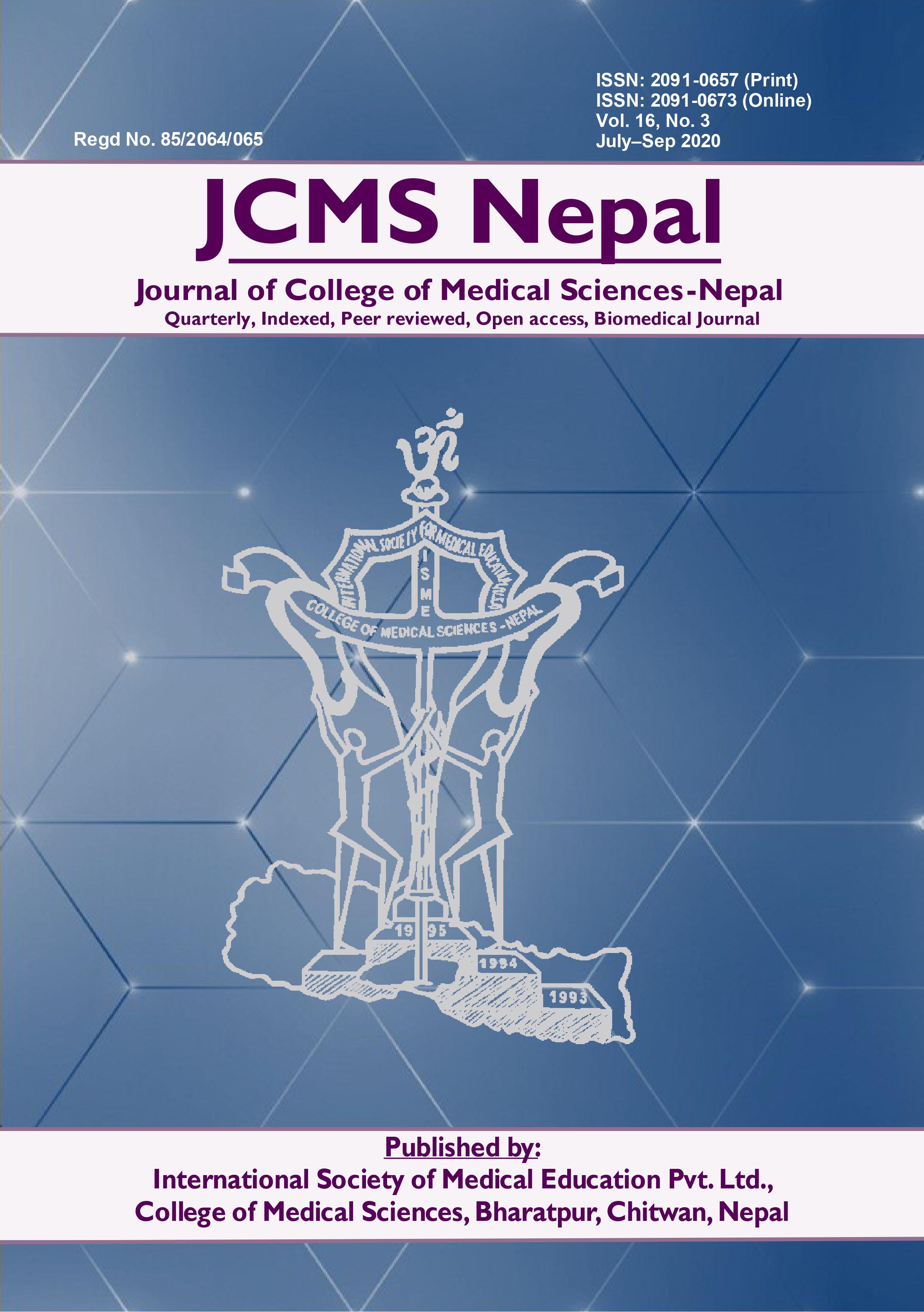Phenotypic Detection of Inducible Clindamycin Resistance among Clinical Isolates of Staphylococcus aureus in Bharatpur Hospital
DOI:
https://doi.org/10.3126/jcmsn.v16i3.28490Keywords:
Clindamycin resistance, cMLSB, iMLSB, MRSA, S. aureusAbstract
Background: Clindamycin is regarded as a reserve drug in the treatment of staphylococcal infections. Among few therapeutic alternatives available for treatment of erythromycin-resistant Staphylococcus aureus infections, clindamycin has several advantages but major limitation in its use is the development of resistance resulting in treatment failure. Routine clindamycin susceptibility test may fail to detect such inducible resistance which can be detected by Double disc diffusion test (D-test). The present study was undertaken to determine the incidence of inducible clindamycin resistance among clinical isolates of S. aureus in a tertiary care hospital in central Nepal. Methods: A cross-sectional study was carried out among the patients visiting Bharatpur Hospital from September to November 2019. A total of 1279 clinical samples were examined for the identification of S. aureus by standard microbiological procedures. Antibiotic susceptibility testing of the isolates was done by Kirby-Bauer disc diffusion method and all the erythromycin-resistant isolates were subjected to D-test for the phenotypic detection of inducible clindamycin resistance according to CLSI guidelines (2016). Results: S. aureus was recovered from 4.5% (58/1279) samples of which 35 isolates were Methicillin-Resistant Staphylococcus aureus (MRSA) and 23 were multi-drug resistant (MDR). Tetracycline was found to be the most effective antibiotic whereas erythromycin was the least effective. D-test revealed that 39.7% isolates showed iMLSB phenotype, 3.5% showed cMLSB phenotype and 56.8% showed MS phenotype. The percentage of inducible and constitutive resistance was seen higher amongst MRSA isolates compared to Methicillin-Sensitive Staphylococcus aureus (MSSA) isolates. Incidence of S. aureus was found higher among females and in the age group 20-30 years and in pus samples (p<0.01). Conclusions: Routine testing of inducible clindamycin resistance is suggested among the clinical isolates of erythromycin-resistant Staphylococci to avoid treatment failure.
Downloads
Downloads
Published
How to Cite
Issue
Section
License
This license enables reusers to copy and distribute the material in any medium or format in unadapted form only, for noncommercial purposes only, and only so long as attribution is given to the creator.




